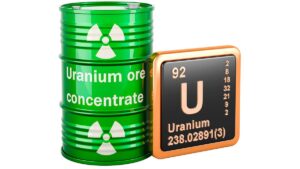Can India lead the next commodities super-cycle? CBA says ‘unlikely’

(Pic: Getty)
As the only country outside of China with a population of more than 1 billion, India is often viewed as a potential driver of global commodity demand.
But assessing the outlook for the Indian economy, CBA analyst Vivek Dhar said it’s unlikely to pick up the mantle from China as a catalyst for the next commodity super-cycle.
Dhar put the outlook for India in a historical context by citing research which pinpointed three long-term commodity super-cycles that have taken place over the last 100 years.
The most recent (and relevant for the current market) ran from around 1995 to 2016; the industrialisation and urbanisation of China.
India commodity super-cycle
China’s post-COVID infrastructure surge notwithstanding, the next structural super-cycle will start somewhere else. And CBA thinks it will take a similar form.
“We think the next super-cycle will also need a large economy to industrialise or urbanise,” Dhar said.
In that context, India is the most likely candidate just based off its size alone.
Policymakers have also expressed a priority to build its manufacturing base, Dhar added.
For Australian companies, India’s business case — a developing country with a huge population and geographical proximity — stacks up well.
And following China’s high-profile ban on Australian coal exports, India showed its potential by emerging as a “key buyer” of thermal coal.
But the the country’s struggles to deal with another devastating wave of COVID-19 infections this year has raised doubts about its capacity to sub in as a global manufacturing hub, amid rising geo-political tensions with the incumbent No 1 customer.
Citing analysis from independent research firm Observatory Group, Dhar said the evidence indicates India’s GDP crashed by around 11% in the March quarter.
That’s a materially sharper decline than the official print, which recorded a 7.3% fall.
And Dhar attributed the mismatch to the skew of official GDP figures towards data gathered from larger businesses.
India’s big corporates have fared better than its many small businesses as the country grapples with COVID-19.
But the problem is that those small businesses account for around 85 per cent of India’s workforce.
And as its economy faces an uneven road to recovery, inflation is also on the rise.
In that context, Dhar said fears are now rising that India will face a stagflation scenario, where prices go up but productivity goes down.
On the plus-side, Dhar flagged India’s foreign currency reserves, which last week rose to a new record high above US$600bn.
Owning funds in foreign currency (primarily the US dollar) helps India to settle import transactions (largely denominated in USD) and reduces the risk of foreign capital outflows.
But while that may provide a “short-term buffer, the medium term economic outlook for India looks challenging”, Dhar said.
“That feeds into our view that an Indian-led commodity super-cycle looks unlikely.”
Related Topics
UNLOCK INSIGHTS
Discover the untold stories of emerging ASX stocks.
Daily news and expert analysis, it's free to subscribe.
By proceeding, you confirm you understand that we handle personal information in accordance with our Privacy Policy.








